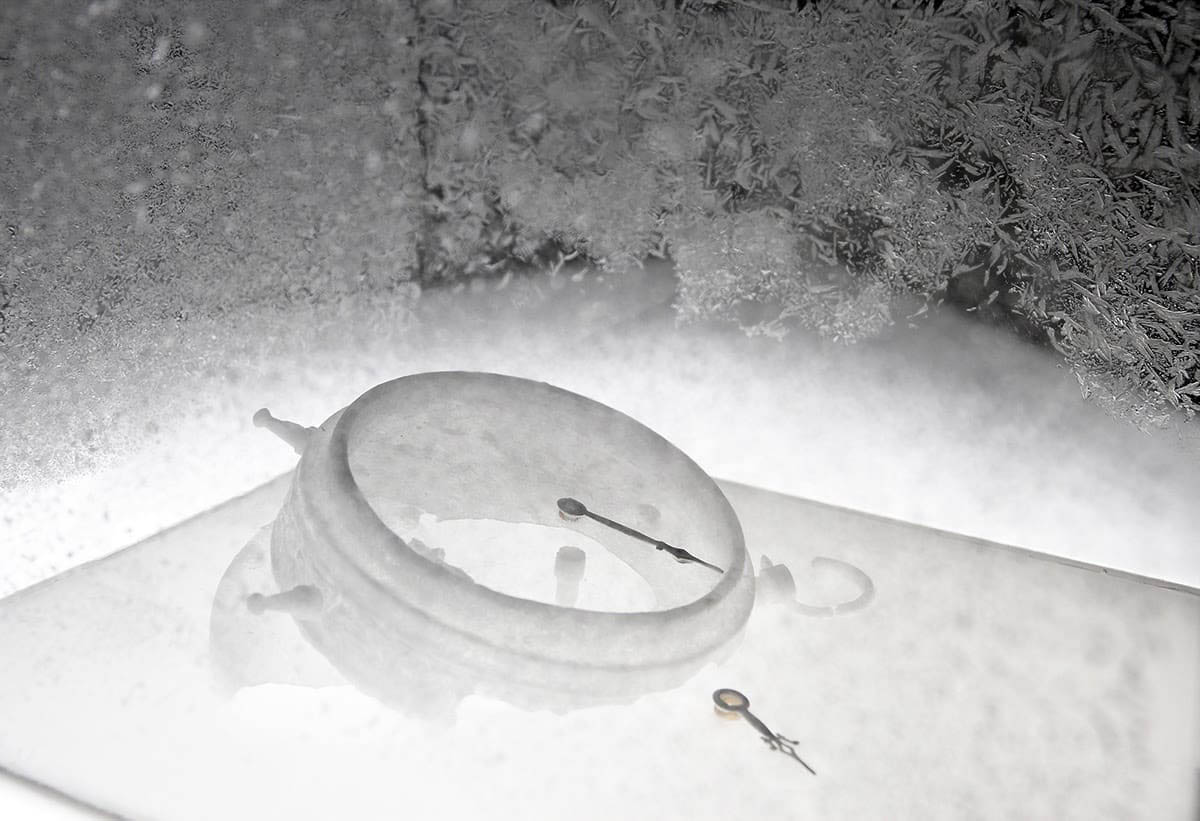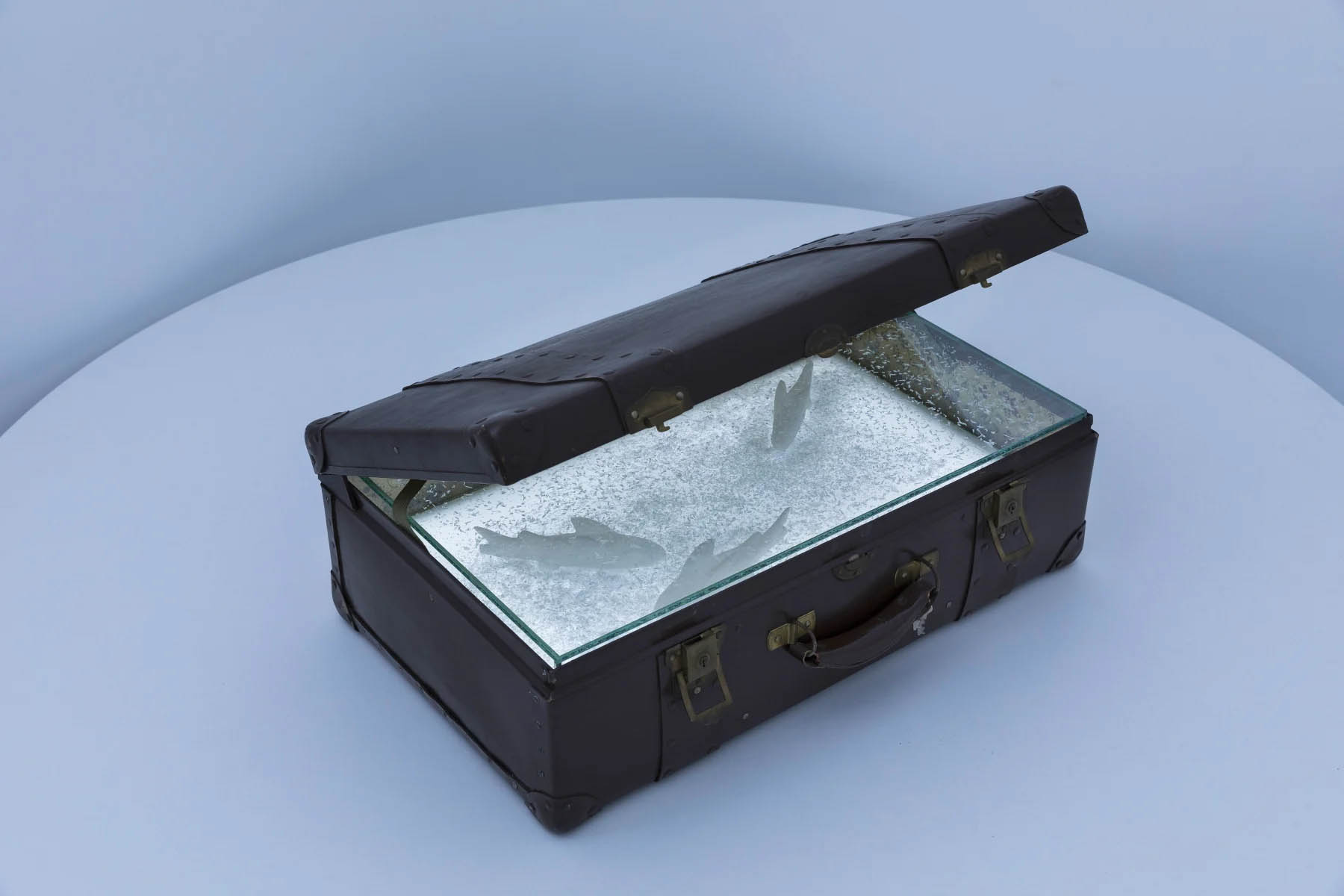The Le Clézio Gallery, which opened in November 2024 on Rue du Faubourg Saint-Honoré, presents works by Aiko Miyanaga, exhibited as a solo show for the first time in France. Her creations open up possibilities through glass sculptures made from molds found in trunks, which in some way dialogue with the renowned ceramicist Tozan Miyanaga, her great-grandfather, as well as through surprising experiments with naphthalene that are destined to disappear, raising questions about impermanence.

The exhibition offers the beginning of a narrative, one of forgetting.
Since her childhood, Aiko Miyanaga has always observed, in the absolute silence of her family workshop, wooden apple crates without ever daring to touch them. In 2020, she discovered "round molds" (two-part plaster molds from Sèvres) created by her great-grandfather Tozan Miyanaga, the first of his name, one of the coordinators of the Japanese Pavilion exhibition during the 1900 Universal Exposition in Paris.
Aiko Miyanaga then poured glass into these historical molds, seeking to revive dormant forms such as the "Rabbit, with an incomplete body," the "Sleeping Tiger," or the "Earless Cat": the one with its right paw raised symbolizes luck. The cat, a highly popular animal in Japan, invites viewers to come closer.

Facing the glass animals in the exhibition, the artist uses another material to capture something, despite its eventual disappearance.
Using naphthalene, which serves as an insect repellent in wardrobes, naphthalene is a solid that sublimates at room temperature. At low temperatures, its vapor pressure is sufficiently high for the solid form of naphthalene to evaporate into gas. Created using the recovered mold, the object made by the artist is enclosed with this component, resin, and air. Glittering crystals form and settle inside the transparent box. Even though the molded object transforms, it does not completely disappear (except over a long period) but reappears in another form, such as transparent, sparkling fragments.
Born into a family of ceramicists, Aiko Miyanaga is more interested in the temporal process than in the objects produced. A visit to the Salar de Uyuni, the largest salt desert in Bolivia, contributed to her reflections and the creative journey behind these unique objects. The formation process begins with the accumulation of water in a basin. Minerals from surrounding sediments and rocks concentrate in the lake, increasing its salinity. Excessive evaporation of the water then creates a salt desert.
Through its ephemeral and random nature, the material's properties, such as its chemical reactivity, take precedence over its volume. The concept of working with the material intersects with that of artistic creation, especially since the material is intrinsic to the artwork. The manipulation of the material, through physical and/or thermal treatment, aims to transform it.
In this quest for the possibilities within the material, in this exploration of how matter changes states, Aiko Miyanaga demonstrates how this metamorphosis underpins the potential for creation, how matter evolves through her actions, resulting in shifting and altered transformations over time.
She highlights the passage, whether enduring or transient, from one form to another, whether it represents a change in external appearance or reveals the intrinsic characteristics of the material's essence.
The artist Aiko Miyanaga explores questions of variability, impermanence, and perhaps even presence in the distant: as surprising as it may seem, naphthalene was identified in space in 2010, suggesting that nothing disappears completely, even as it changes incessantly.
editor
Nathalie Gallon is an art critic and a member of AICA. She writes texts about artists for platforms, online and print magazines, and galleries. As an independent exhibition curator, art advisor, and co-editor of Beaux-Livres, she has been involved in various artistic projects.
The exhibition "Éphémérides coréennes" (Korean Ephemerides), which she curated and produced, was officially recognized as part of the France-Korea Year in 2015. From 2010 to 2012, she served as the General Delegate of the Carmignac Foundation and directed its international photography prize for six years, since its inception in 2009. She also designs and develops artistic projects.
PRACTICAL INFORMATIONS
Aiko Miyanaga
Le Clézio Gallery
157 Rue du Faubourg St Honoré
75008 Paris
Until April 6 2025
https://www.lecleziogallery.com/en/
